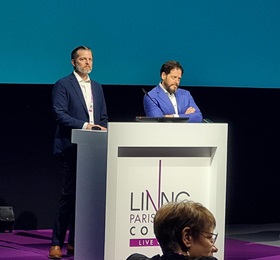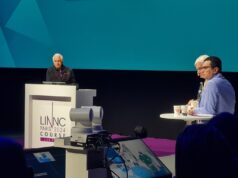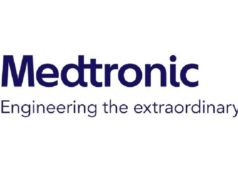
Following their initial presentation earlier this year, two randomised controlled trials (RCTs) indicating positive outcomes with middle meningeal artery (MMA) embolisation in chronic subdural haematoma (cSDH) patients were discussed in greater detail at the recent LINNC Paris meeting (3–5 June, Paris, France). Topics including study design, anaesthesia approaches, treatment timings, and the possibility of a future “HERMES-style collaborative”, were examined by those in attendance.
As co-principal investigator (PI), Adam Arthur (University of Tennessee Health Science Center/Semmes-Murphey Clinic, Memphis, USA) kicked off proceedings with a summary of the STEM RCT and its findings on the usage of the Squid liquid embolic system (Balt) to treat cSDH. Arthur averred that this is an “incredibly common” disease and frequent cause of in-hospital neurosurgical mortality, with over 60,000 annual cases anticipated in the USA alone by 2030, but one without a body of level-one evidence or clear guidelines on treatment.
“Everyone in this room is dealing with an increase in [stroke] thrombectomies, dealing with an increase in techniques for aneurysm and AVM [arteriovenous malformation], but I’m hopeful that—before we’re done with our careers—neurointervention as a specialty is actually going to be bigger than neurosurgery,” he said. “We’re going to see more diseases that can be approached endovascularly. There are many more of these [cSDH] patients than all of the types of aneurysm patients put together.”
Arthur commended the “major leap of faith” taken by Balt as well as the early efforts of several neurointerventionists as being key drivers of the recent success seen with MMA embolisation in cSDH. He and his co-PI, David Fiorella (Stony Brook Cerebrovascular Center, Stony Brook, USA), began to adopt the approach around 2017 and ultimately devised the STEM trial—with initial results being presented at the 2024 International Stroke Conference (ISC; 7–9 February, Phoenix, USA).
Despite sizeable challenges encountered throughout the study—as Arthur quipped, “we learned that it’s an extremely bad idea to try to run a large, international RCT on elderly patients during a pandemic”—STEM met its primary endpoint. Treatment with Squid reduced failure rates to 15%, compared to 40% in patients treated without the liquid embolic, which Arthur described as an “extraordinarily significant and extremely powerful” effect. In addition, there were no deaths in the trial’s treatment arm that were attributable to Squid itself.
“We’re working very hard on the data,” Arthur continued. “I’m really looking forward to economic, length-of-stay, patient-reported and neuropsychological data. I should be able to share all of those with you very soon; we just got a major data download in the last 36 hours [speaking on 5 June 2024] that we’ve been working on.
“In summary, this procedure is fast and technically easy. It’s safe—there are risks, but those risks are lowered if you’re very distal—and it’s effective, as already shown in uncontrolled series. And, now, we have evidence from RCTs that have been able to be put together very quickly because it is such a prevalent disease, which is different compared to aneurysms and AVMs.”
Arthur concluded by alluding to the other completed and ongoing RCTs evaluating MMA embolisation for cSDH and, in doing so, provided a fitting introduction for Jason Davies (State University of New York, Buffalo, USA) to recap recent revelations from the EMBOLISE trial. EMBOLISE was also presented for the first time at ISC 2024, by Davies and his co-PI Jared Knopman (Weill Cornell Medical College, New York, USA).
EMBOLISE featured a handful of key differences as compared to STEM, including the exact structure of its treatment and control arms; its primary endpoint, which was concerned solely with haematoma recurrence/progression at 90 days versus STEM’s composite of multiple failure modes at 180 days; and the fact its liquid embolic system of choice was Onyx (Medtronic).
Nevertheless, its overall findings to date are every bit as positive—cSDH patients who underwent surgery plus adjunctive MMA embolisation experienced a “highly significant”, three-fold reduction in haematoma recurrence/progression compared to those who underwent surgery only. Davies also touched on “very strong safety data”, including similar rates of neurologic deterioration, stroke and death between the two arms, low rates of serious adverse events within 30 days, and no adverse events related specifically to Onyx within 90 days.
Prior to concluding, Davies recapped some more granular imaging data from EMBOLISE that were first presented by Jens Fiehler (University Medical Center Hamburg-Eppendorf, Hamburg, Germany) at last month’s European Stroke Organisation Conference (ESOC; 15–17 May, Basel, Switzerland). These data are still to be fully validated but may enable researchers to “parse out which haematomas are more likely to respond, and which patients are apt to be good candidates for [MMA embolisation]”, according to Davies.
Citing Fiehler, the presenter reported a treatment effect that was about 10% greater in patients with more homogenous haematomas; a higher ‘number needed to treat’ in smaller haematomas, suggesting that “the larger the haematoma, the more effective the treatment seems to be”; and a reduced rate of recurrence/progression in more spherical haematomas with a lower surface-to-volume ratio versus ‘flatter’ ones.
“But, we did see a significant therapeutic effect across all patients,” Davies summarised. “Adjunctive MMA embolisation with Onyx was associated with significantly reduced rates of reoperation and, therefore, MMA embolisation should be considered for surgical patients.”
At the close of these two presentations, Arthur commented that EMBOLISE and STEM, despite their differing designs, produced results that are “very consistent” as well as reproduceable. Davies corroborated this, noting that the raw data are available to make “apples-to-apples” comparisons across both studies—also suggesting that it is likely EMBOLISE would have produced similar findings if it adopted STEM’s endpoints, and vice versa.
Anaesthesia versus sedation
Subsequent discussions saw Davies note that, in EMBOLISE, he and his colleagues advocated conscious sedation—but were ultimately unsuccessful, as roughly 80% of patients received MMA embolisation under general anaesthesia. Davies also admitted he holds a certain ‘Buffalo bias’ here, but added that “this is definitely a procedure that can be done under conscious sedation, with the proper preparation”.
“I find the anatomy variable,” Arthur added. “Some of these cases are very easy and can be done in an older patient even if they are moving around but, in some of them, the navigation of the MMA can be challenging—and I think getting distal is important. So, either is fine; if you’re going to go without general anaesthesia, I think intra-arterial lidocaine and verapamil prior to treatment with a liquid embolic can be helpful.”
Davies agreed, also commenting that the EMBOLISE investigators observed conscious sedation generally being less optimal when used by physicians who were not accustomed to it and, as such, offered the following advice: “First and foremost, you’ve got to be safe. If you’re not used to a patient moving around, do it under anaesthesia. If you’re comfortable with it, then we can get it done safely [under conscious sedation].”
Next frontiers
Responding to a question from Elisa Francesca Ciceri (Foundation of the Carlo Besta Neurological Institute, Milan, Italy) on whether outcomes may differ when embolising one versus multiple MMA branches, Davies said these data do exist but are yet to be fully analysed.
“The truth of the matter is that we do not yet know what constitutes a minimally adequate embolisation,” he went on. “We believe that getting into the membranes is a significant part of that. We’re using something that involves DMSO [dimethyl sulfoxide]—maybe just hitting the DMSO of the membranes is all you really need, but we don’t know yet.”
On this point, Fiehler stated that the exact requirements for ensuring sufficient cSDH treatment represent “the hundred-thousand-dollar question”, and further analyses may elucidate whether proximal or distal embolisation is more appropriate.
“These analyses are ongoing, and the strength of this moment in time is that we’ve got 1,500 cases between the three trials that have already been presented and there are other trials ongoing,” Davies added. “I think we’re going to have a HERMES-style collaborative that’s going to be able to answer some of these questions.”
Following this, Zsolt Kulcsár (University Hospital of Zürich, Zürich, Switzerland) commented that SDH is a condition that likely evolves over time—through acute, subacute and chronic phases—and therefore queried when might be the optimal moment to treat these patients.
“In the context of [EMBOLISE], we asked for embolisation to be done within 48 hours of surgery,” Davies responded. “Is that a meaningful time period? I don’t know—in speaking to some of you here, I understand that the constraints of different hospital systems may mean the patient should be discharged and then come back. I think that may work, we don’t have data to support that, but—thinking through the pathophysiology—I don’t think there’s an acute need to embolise right after surgery. You probably have some leniency in terms of the timing.”
Arthur added to this, stating that no definitive data yet support treating asymptomatic cSDH patients nor those with acute, traumatic SDH, but this is also likely to be explored further over the coming years.
A final topic touched on by the speakers, and the expert panel at LINNC, was the possibility for alternative approaches like particle-based MMA embolisation to also emerge as a viable cSDH therapy. Arthur and Davies noted that they and many others prefer to use liquid embolic agents rather than polyvinyl alcohol (PVA) particles—while the former is more expensive, it offers greater penetration of the pathology and, potentially, fewer risks.
After applauding the STEM and EMBOLISE investigators’ work as “phenomenal”, and noting that they have “opened the door for so many patients who need that help”, Ricardo Hanel (Baptist Neurological Institute, Jacksonville, USA) said the CHESS study—a multicentre RCT comparing standalone MMA embolisation with particles (PVA or embospheres) to surgical drainage in cSDH patients—is “starting soon” and “could help answer this question” of whether particles are as effective as liquid embolics.
“Thank you both for driving this field forward,” said LINNC course director Vitor Mendes Pereira (St Michael’s Hospital, Toronto, Canada), drawing the discussion to an end. “I think, now, we all have to work on improving the workflows, because we have to know how we can get these patients to the angio [suite] as quickly as possible—and that’s coming with the good evidence base that you have created. It’s a good first step, and I’m looking forward to the publications and the subgroup analyses.”













